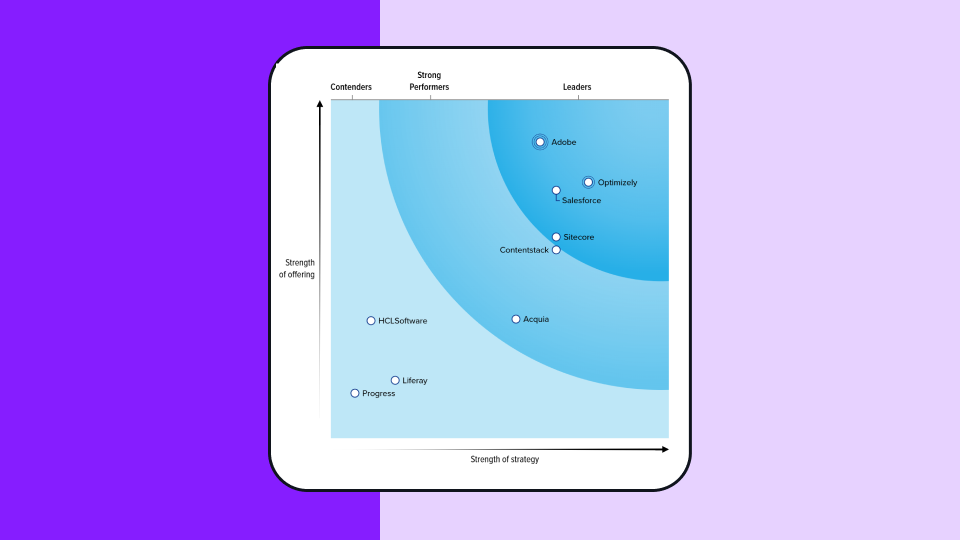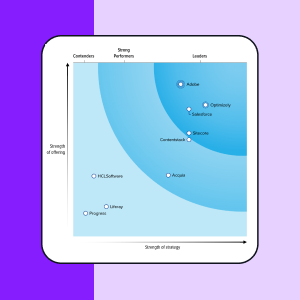Squeeze-side
Hva er en squeeze-side?
En squeeze-side er en landingsside som er spesielt utformet for å samle inn e-postadresser fra besøkende og potensielle kunder. Squeeze-sider er utformet for å bruke insentiver, knapphet og andre psykologiske taktikker for å "presse" en besøkende til å oppgi e-postadressen sin.
Hvorfor bedrifter bruker pressesider
Til tross for de mange digitale markedsføringskanalene som finnes i dag, er e-post fortsatt en av de mest effektive kanalene for markedsføring på nettet. Derfor jobber mange bedrifter hardt for å samle inn e-postadresser fra potensielle kunder, som en del av leadsgenereringstrakten, slik at de kan markedsføre seg mot dem senere.
Squeeze-sider er en ekstrem form for lead capture som er designet utelukkende for å samle inn e-postadresser. Pressesider bruker ofte flere overtalelsesteknikker i tillegg til et enkelt design med en primær CTA som fokuserer på å få kundene til å melde seg på e-postmarkedsføring.
Når e-posten er samlet inn, legges den vanligvis til i en e-postliste der automatiserte markedsføringsprogrammer kan brukes til å sende målrettede autosvar-e-poster til potensielle kunder, med det formål å konvertere dem til kunder. Skruppelløse markedsførere kan også selge lister over e-postabonnentene sine eller bruke listene de skaffer seg gjennom pressesider til å markedsføre tilknyttede produkter.
Grunnleggende elementer i design av pressesider
Markedsførere holder generelt innholdet - og distraksjonene - på en squeeze-side på et minimum. I motsetning til en typisk hjemmeside eller katalogside inneholder en squeeze-side vanligvis ikke en søkeboks, navigasjonslenker eller andre måter å bla gjennom ytterligere informasjon på.
Nettsiden er utformet for å holde brukeren fokusert på det eneste målet, nemlig å gi fra seg e-postadressen sin.
Mange squeeze-sider tilbyr gratis gaver som gratis e-bøker, white papers, videoer, casestudier og rapporter som en måte å motivere brukerne til å oppgi e-postadressen sin.
I tillegg til tekst bruker noen pressesider også informativt "teaser"-innhold, for eksempel videoer som bidrar til å promotere det som pressesiden lover å levere.
Pressesider varierer etter bransje og innholdstype, men alle inkluderer en kombinasjon av følgende:
- fengende overskrift
- Selskapets logo
- Understøttende tekst i avsnitt eller punktform
- Teaser-video
- Fargerik grafikk eller bilder
- Kundelogoer, attester og/eller suksesshistorier
- Personvernerklæring og/eller tjenestevilkår for å bygge tillit
- Knapp for oppfordring til handling
- Grafiske elementer (for eksempel piler) som leder oppmerksomheten mot oppfordringsknappen
- Knapphet (tidsbegrenset tilbud eller utløpsdato)
- Sosialt bevis
Slik kan du forbedre pressesiden din
Markedsførere bruker en rekke strategier for å forbedre konverteringen på en squeeze-side. Mange av disse er hentet fra direkteresponsmarkedsføring, for eksempel bruk av iøynefallende design, handlingsrettede overskrifter og tydelige fordeler ved å registrere seg.
En vanlig teknikk er å minimere visuelle distraksjoner - holde bildene enkle og siden fri for navigasjons- eller andre typer lenker.
Den eneste handlingen som skal være synlig, er handlingen du ønsker at brukeren skal utføre.
En annen effektiv strategi for å forbedre konverteringsfrekvensen på en squeeze-side er å inkorporere visuelle elementer som piler som leder brukerens øyne til call-to-action-knappen.
For enkelte produkter kan et bilde av en engasjerende person på landingssiden øke konverteringsraten betraktelig. For andre kan et bilde av et vakkert landskap eller en vakker utsikt ha samme effekt.
En måte å forbedre konverteringen på er å kommunisere faktiske fordeler i oppfordringsknappen i stedet for bare en kommando. I stedet for å bruke de typiske "Send" eller "Abonner", kan markedsførere øke konverteringen med "Send meg mine gratis tips" eller "Spar 99 dollar nå!".
Andre vanlige elementer som markedsførere ofte inkluderer på squeeze-sider, er nedtellingstimer, som formidler en følelse av at det haster, eller attester som formidler en følelse av tillit.
Exit-popup-vinduer, som dukker opp når brukere prøver å navigere seg bort fra siden, er en annen taktikk som markedsførere ofte bruker for å holde brukerne på squeeze-siden. Exit-popup-vinduet presenterer ofte et enda mer lukrativt, tidssensitivt tilbud for å få brukerne til å oppgi e-postadressen sin.
Til slutt er god SEO for å hjelpe kundene med å finne frem til landingssiden, og minimering av skjemafeltene for å redusere konverteringsbarrierene viktige digitale markedsføringstaktikker for en høykonverterende squeeze-side.
Bruk A/B-testing for å optimalisere pressesider
For å oppnå optimale resultater kan du bruke Optimizely til å A/B-teste en rekke strategier og kreative varianter av squeeze-siden din.
Variasjoner i sideformat, overskrifter, design og oppfordringer til handling vil gi ulik respons hos ulike målgrupper. Du kan utvikle en rekke hypoteser om hvordan du kan øke konverteringen for å lage en god squeeze-side.
Når du har et klart sett med ideer og hypoteser som skal testes, kan du med Optimizely kjøre tester på de besøkende på nettstedet ditt, og bruke faktisk brukeratferd som grunnlag for utformingen av squeeze-siden.

